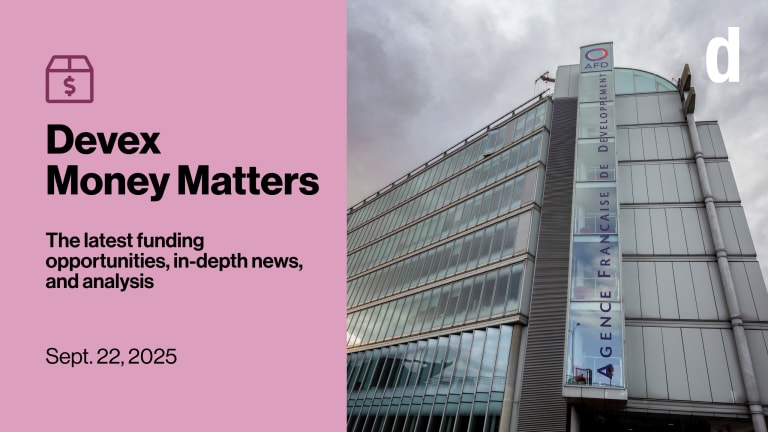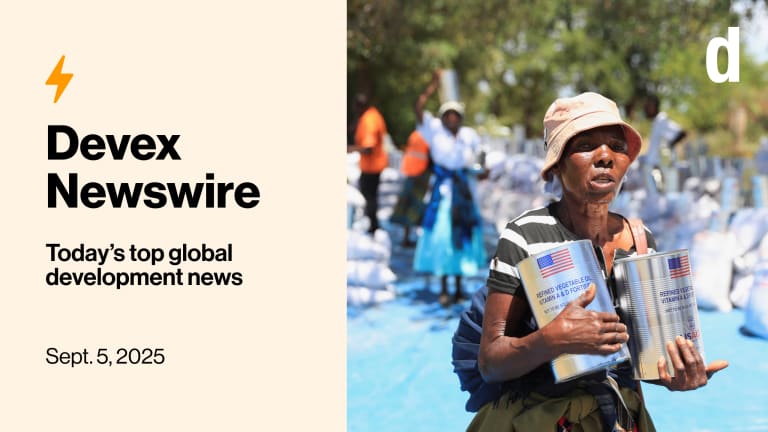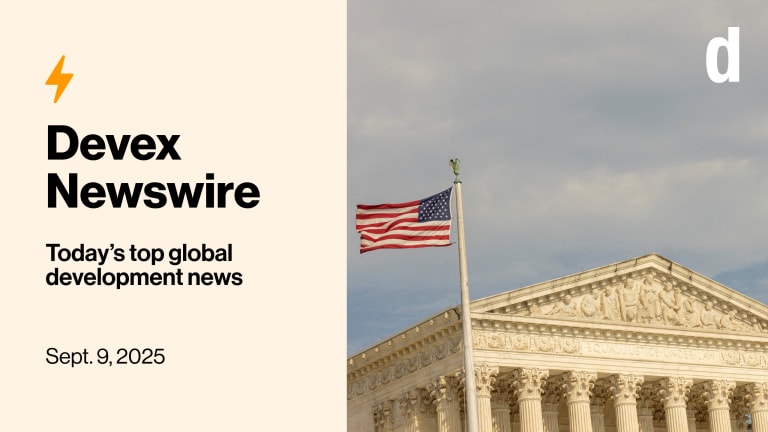
Much like mobile phones, solar lights get cheaper by the day. Go online and search for “solar lamps,” and you’ll probably find wholesalers selling products for less than $15 per unit.
It’s no wonder then that the technology has received enormous interest from the aid community. Solar lighting, some say, is the next biggest game changer in the fight against global poverty for its ability to not just save money, but also protect people’s health and the environment. And it can help students learn because solar-powered gadgets tend to last longer than, say, kerosene lamps, which are still widely used across Africa and Asia.
“A brighter light source makes it easier to socialize after dark and increases feelings of security,” Tom Moore, an official at SolarAid, told Devex. “Increased income, dignity, choice, opportunity and a sense of empowerment are all provided by switching from kerosene to solar.”
In several African countries, SolarAid offers different types of solar lamps, including $10 compact units that last up to five years. That’s a bargain, considering the amount of money Africans spend on kerosene — an average of $87 per year, based on interviews conducted by the U.K.-based charity.
Changing people’s preference for energy source, though, require raising awareness about the benefits of innovative alternatives. SolarAid, according to Moore, has opted for a novel, grass-roots approach to improve visibility of its solar lamps without breaking the bank.
The charity works with head teachers in local schools “to ensure the message trickles down in to the local community.” It convenes regional head teacher meetings where it demonstrates the advantages of going solar.
With free solar lights on hand, the teachers return to their schools and share what they learned with their students. Students then place orders to the schools, and head teachers pass these on to SunnyMoney, the social enterprise SolarAid has established to sell the lights; once the lamps are delivered, students take them back to their family homes.
Moore said the teachers have a “vested interest” in spreading the word about solar lamps because of the technology’s positive impact on exam results of students. In Tanzania, he noted that representatives from 200 schools typically attend a head teacher meeting.
“This approach enables us to seed local markets to build demand which will ultimately make a permanent distribution network viable,” he told Devex.
The next phase of SolarAid’s multiaward-winning model entails training and employing school leavers as solar entrepreneurs. The nonprofit is using funding from Google Impact Awards to recruit 400 school leavers in Tanzania into entrepreneurs. It intends to do the same in Kenya, Zambia and Malawi.
By 2017, SolarAid expects SunnyMoney to become self-sufficient. The prospect looks positive: To date, SunnyMoney has sold more than 600,000 lamps, and sales continue to grow.
That said, obtaining funding remains the biggest challenge for SolarAid, said Moore. That, he noted, comes with the model his organization has pursued to do its work, one that combines philanthropy and social business.
He explained: “We do want our social enterprise to be profitable so we can reinvest all the excess revenue back in to the enterprise to achieve our social mission. But we also want all of our work to be funded by philanthropy so that we can remain 100 percent focused on our goals, without paying out to shareholders. We are using philanthropy to bring forward the emergence of a market which will ultimately be profitable for those that invest — some philanthropists find that quite difficult. Others — tired of traditional aid which is often unsustainable, with limited impact — really get excited about how innovative and original our theory of change is.”
SolarAid has broader plans, Moore revealed. It wants to evolve from a charity that funds a social enterprise into one that is an industry leader. It will lobby governments for solar tax relief, become heavily involved in shaping policy and sharing knowledge on the technology, and encourage more organizations to join the industry, “helping them get lights to millions too.”
Read our previous #innov8aid and let us know what you think about this innovation by leaving a comment below.








